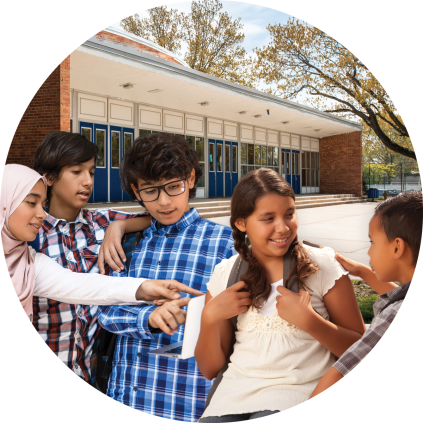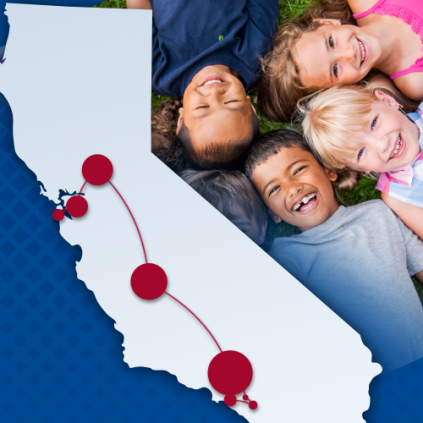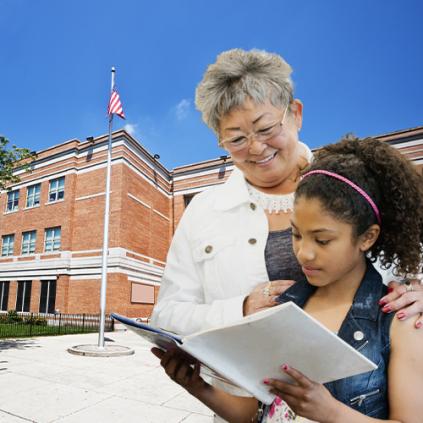Newcomer students—immigrant students in their first years at U.S. schools—have long been an underserved group in California’s school systems. Newcomers require specialized curricula and instruction to succeed in school as well as access to social services to meet even their basic needs. Unfortunately, most newcomers have not experienced schooling that adequately addresses their unique needs and drop out at a disproportionately high rate. There are thus significant opportunities to improve education for newcomers in California through policies, data systems, curricula, programs development, and collaborations.
In 2021 PACE launched a Research-Practice-Policy Partnership on Newcomer Education in California that brought together a group of leading experts from across research, policy, and practice to develop new knowledge about and better approaches to addressing the holistic needs of immigrant and refugee students.
The results are detailed in six publications that shed light on opportunities for supporting newcomer students in California and improving their education experiences.

COVID-19 has induced an unprecedented crisis in education in California. Due to the pandemic, a variety of academic, health, and social-emotional needs will emerge among California’s students. Preexisting achievement gaps in California will likely be exacerbated as a consequence of inequities in learning opportunities across the state. PACE has activated its network of researchers to work with policymakers and education leaders to bring evidence to bear in helping California’s systems become stronger to support students in the aftermath of the crisis. The PACE COVID-19 Recovery Initiative will draw on research to inform a range of topics related to building system capacity for recovery in California schools in the COVID-19 context.

In October 2015, Policy Analysis for California Education (PACE) and the CORE Districts launched the CORE-PACE Research Partnership. The CORE districts (Fresno, Garden Grove, Long Beach, Los Angeles, Oakland, Sacramento City, San Francisco, and Santa Ana Unified School Districts) together serve nearly a million students and utilize a unique multiple measures data system to work together to improve student outcomes. Our research aims to deepen their learning, while sharing lessons more broadly to accelerate improvement across the state.

How does the public view California’s schools and education policy effectiveness? Do voters understand the challenges that California faces, and are they prepared to make the tough choices and tradeoffs that potential solutions entail? Polls conducted by PACE and the Rossier School of Education at the University of Southern California seek to learn more about how Californians perceive and understand the opportunities facing California’s education system, and to gauge voter interest in policy options that move the system forward.

In the year following the publication of Getting Down to Facts II, PACE heard from stakeholders in Sacramento and across the state that more knowledge on how to better serve students with disabilities was needed to guide policy and practice. The absence of practical knowledge on systems to support special education juxtaposed with the urgency that decisionmakers were placing on designing new special education policy made it well-suited as a topic of a PACE Policy Research Panel. On August 13, 2019, PACE hosted a meeting of key actors in special education policy, practice, and research (see below) to reimagine how students with disabilities are served in California and to identify the knowledge needs to make that vision a reality for all students. While discussions of special education in California often focus on issues of special education finance, the emphasis of the PACE Policy Research Panel on Special Education was to clarify the type of system we seek to build to serve all students – including students with disabilities. The full set of publications were released on February 18, 2020, with a webinars on February 27, March 5, and March 10 to share findings.

Over the past 10 years, California has made significant changes to its educational systems, including adopting new academic standards, transforming its approaches to funding and accountability, and shifting toward a more decentralized system of governance and finance. These shifts have been implemented with continuous improvement as the vision for California’s approach to advancing experiences and outcomes for students. Given these recent significant shifts, PACE saw the need to take stock of what we know about the implementation of these policies and what we still need to know to continue moving policy and practice in a positive direction. To this end, on October 15-16, 2019, PACE hosted a meeting of key actors in policy, practice, and research to assess the current status of the implementation of continuous improvement in schools in California and to develop a research agenda to better understand and strengthen California’s continuous school improvement and support systems. Together, this PRP discussed the latest research on the systems to support continuous improvement in the state, surfaced knowledge needs, and co-developed strategies for using research to equip policymakers and practitioners in advancing outcomes for students.

Getting Down To Facts II is a research initiative that provides in-depth analysis of California’s education system as of 2018 and looks at what is working well and where improvement is still needed. Over one hundred researchers from the nation’s leading academic institutions focused on four aspects of California education – student success, governance systems, personnel issues, and school finance. These studies resulted in 36 methodologically rigorous technical reports that span these four areas. Nineteen research briefs synthesize the main findings from the technical reports for a broader readership. Taken together, these research products help to build a common understanding of the performance of California’s PreK-12 school system and the opportunities for improvement. While this research is not intended to advocate specific policies, the findings provide evidence to inform the policy decisions that can ensure California continues to move in the right direction on behalf of all students in the state.

The Local Control Funding Formula Research Collaborative (LCFFRC) brings together a diverse set of policy experts who, since 2014, have been documenting implementation of the Local Control Funding Formula (LCFF), California’s pathbreaking finance and governance system. Operating under the auspices of Policy Analysis for California Education (PACE), principal LCFFRC researchers are Julia Koppich (J. Koppich & Associates), Daniel Humphrey (Independent Consultant), Julie Marsh (University of Southern California), Jennifer O’Day (American Institutes of Research), Magaly Lavadenz (Loyal Marymount), and Laura Stokes (Inverness Research).
